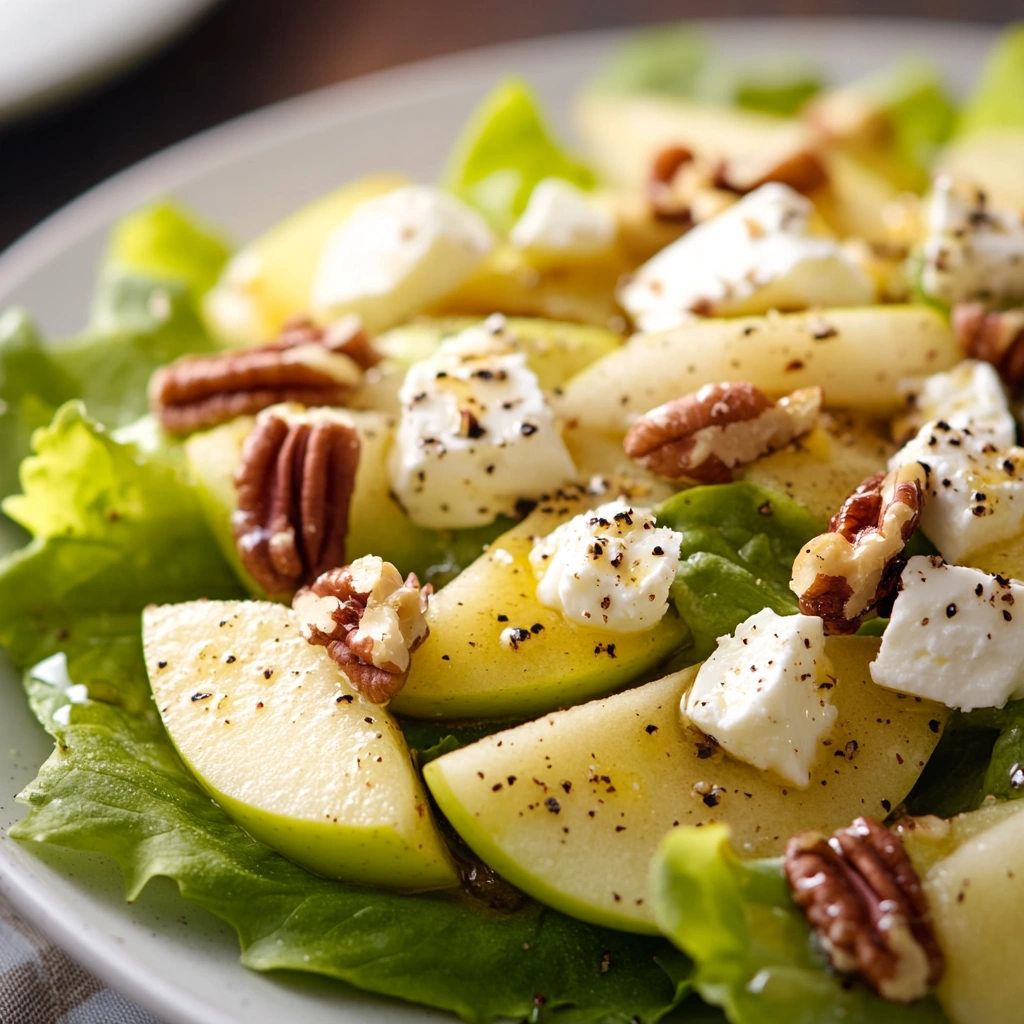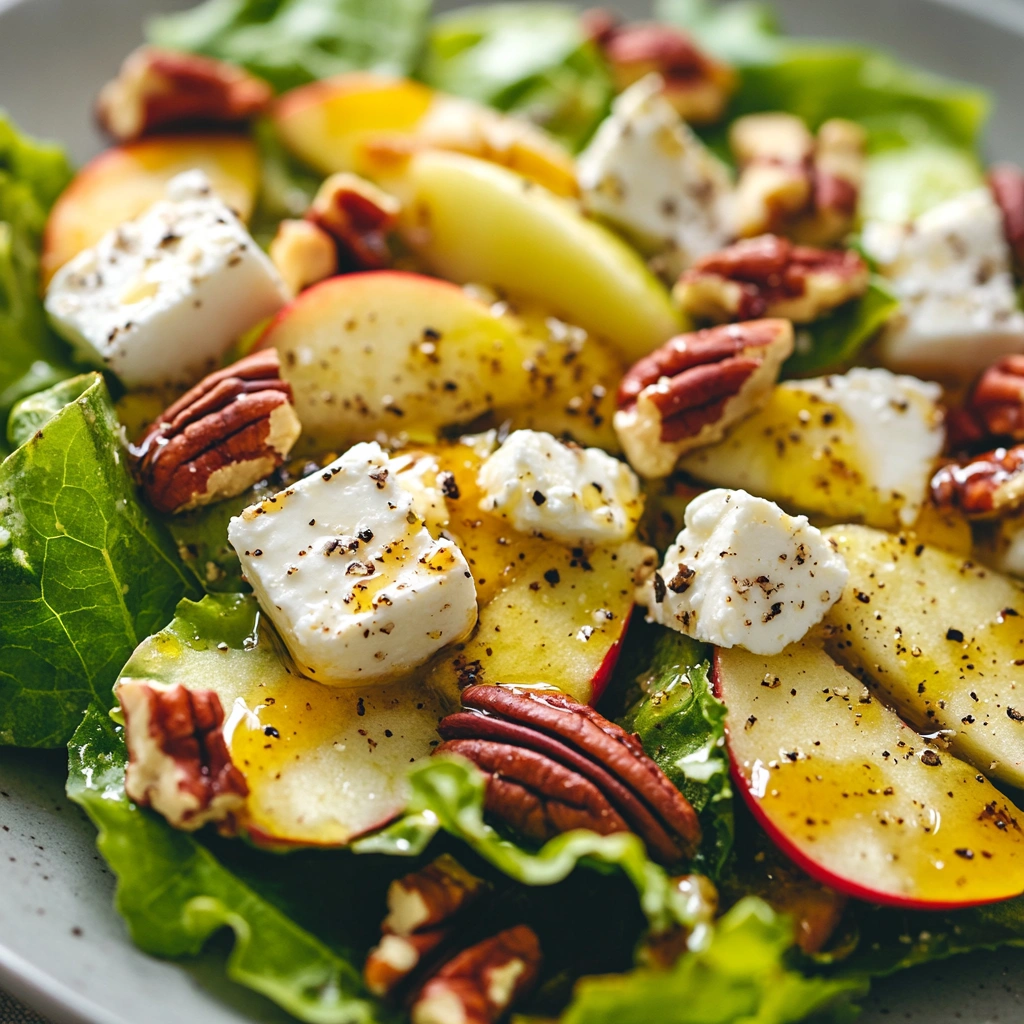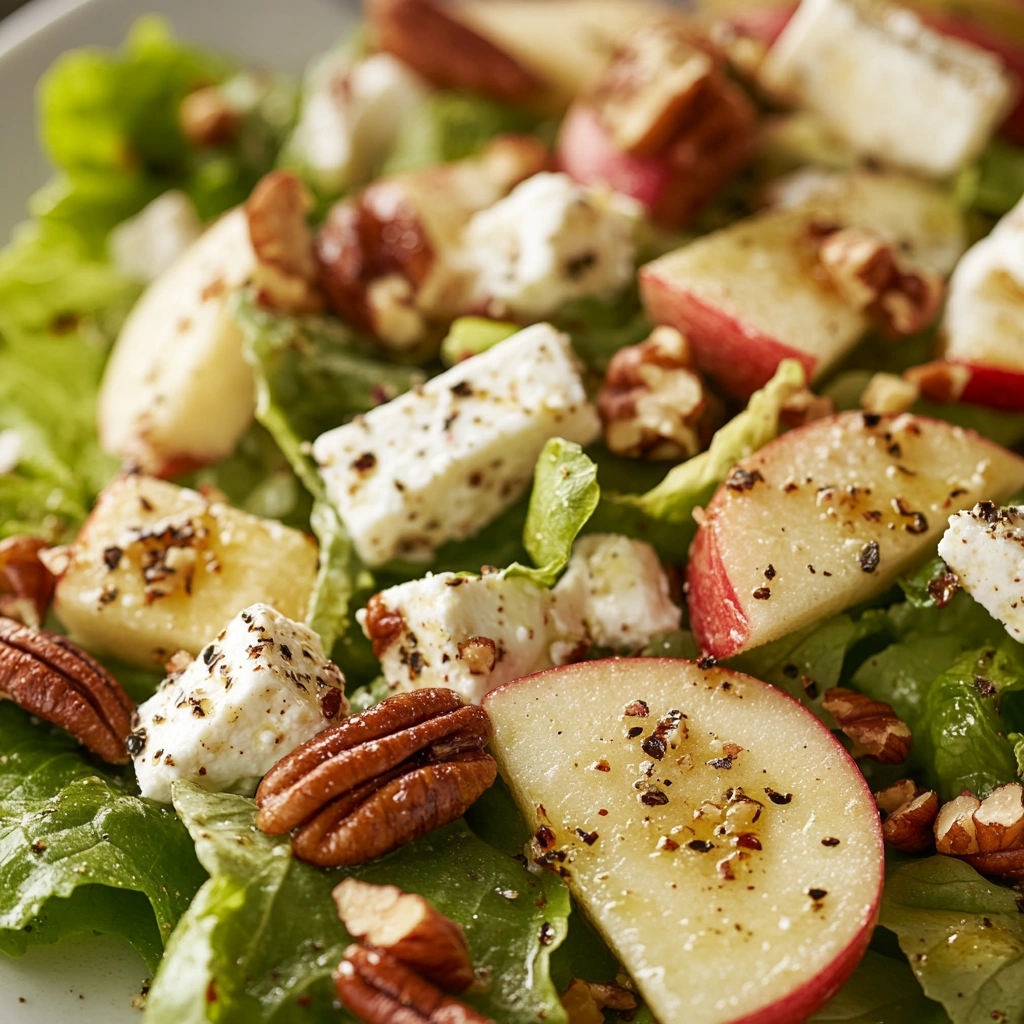Honeycrisp apples bring a vibrant crunch and a perfect balance of sweetness and acidity to any salad, transforming ordinary greens into a memorable dish. When paired with creamy, tangy feta cheese, the result is a refreshing medley of flavors and textures that delights the palate. In this article, you’ll discover how to highlight the unique qualities of Honeycrisp apples, master essential preparation techniques, and craft a simple yet elegant dressing that ties every component together. Whether you’re seeking a light lunch, a stunning side for dinner, or a dish to impress at your next gathering, this guide will equip you with the knowledge and tips needed to create a Honeycrisp Apple Feta Salad that shines. From understanding the apple’s origin to customizing your own variations, you’ll learn everything required to assemble a salad that’s as beautiful as it is delicious.
Background & Origins
The Honeycrisp apple originated from a breeding program at the University of Minnesota, where researchers set out in the 1960s to develop an apple that combined exceptional cold hardiness with outstanding eating quality. After decades of cross-breeding and rigorous selection, the cultivar known as MN 1711 was released commercially in 1991 under the trade name “Honeycrisp.” Its patented status and limited early production contributed to its premium price and rapid rise in popularity among consumers and chefs alike.
Feta cheese’s history stretches back centuries to ancient Greece, where shepherds first began salting and aging sheep’s and goat’s milk curds to preserve them. Today, true Greek feta enjoys Protected Designation of Origin (PDO) status in the European Union, ensuring that only cheese produced in certain regions of Greece using traditional methods may bear the name. Its characteristic crumbly texture and briny flavor make it an ideal counterpoint to the crisp sweetness of Honeycrisp apples.
The modern trend of combining fruit with savory cheeses in salads gained momentum as home cooks and professional chefs sought fresh, contrasting flavors. The Honeycrisp Apple Feta Salad exemplifies this movement, offering a harmonious interplay of sweet, salty, and tangy notes alongside varied textures—from the snap of the apple to the creaminess of the cheese and the crunch of nuts or seeds. This salad has since become a staple on autumn menus and a favorite at seasonal gatherings.
Why Honeycrisp?
Honeycrisp stands apart due to its unique cell structure: large, juice-filled cells that burst under each bite, delivering unparalleled crispness. Its balanced sugar-to-acid ratio—approximately 11% soluble solids to 0.7% malic acid—creates a flavor that is both sweet and tart without leaning too heavily in either direction. Unlike many apples that lose texture over time, Honeycrisp maintains firmness even after weeks in cold storage, making it ideal for prepped salads. Peak season runs from September through November, though well-handled fruit can be enjoyed into spring. To extend freshness, store whole apples in a cool, humid environment, and slice only just before assembling your salad.
Key Ingredients Overview
Begin with 2–3 medium Honeycrisp apples, washed, cored, and thinly sliced or cubed. Choose a block of high-quality feta—preferably Greek PDO—for its authentic tang; crumble or cut into small cubes according to your texture preference. For the greens, opt for a peppery arugula or a tender mix of baby spinach and leaf lettuce. To introduce additional crunch, select raw or toasted walnuts, pecans, or pepitas. Optional add-ins include dried cranberries for bursts of chewiness, thinly sliced red onion for bite, and fresh herbs such as mint or chives to brighten the flavor profile. Each ingredient plays a specific role, ensuring every forkful contains a balanced medley of tastes and textures.
Prep & Technique
Start by washing apples under cold water, then dry thoroughly. To prevent browning, toss sliced pieces immediately in a bowl with a tablespoon of lemon juice or mild vinegar. When handling feta, drain excess brine and pat dry with a paper towel before crumbling; this ensures the cheese doesn’t water down the salad. For nuts or seeds, spread them on a baking sheet and toast in a preheated 350°F oven for 5–7 minutes, shaking halfway through for even color—watch carefully to avoid burning.
Layering technique is key: arrange the greens first to form a base, then distribute apple slices evenly to showcase their vibrant color. Crumble feta over the top, sprinkling nuts next for visual contrast. This approach ensures the dressing coats every component when tossed. If you prefer a composed presentation, arrange ingredients in concentric rings on a large platter, reserving dressing until just before serving. Finally, use a gentle hand when tossing to preserve the integrity of delicate greens and maintain distinct textures.
DIY Dressing
A classic vinaigrette enhances without overpowering. In a small jar, combine 3 tablespoons extra-virgin olive oil, 1 tablespoon apple cider vinegar, 1 teaspoon Dijon mustard, and 1 teaspoon honey. Season with ¼ teaspoon fine sea salt and a generous crack of black pepper. Secure the lid and shake vigorously until the mixture emulsifies into a creamy, homogeneous dressing. Taste and adjust—add a pinch more honey for sweetness or an extra dash of vinegar for tang.
For best results, let the dressing rest at room temperature for 10 minutes to meld flavors. Store any leftovers in the refrigerator for up to one week; bring to room temperature and re-shake before using. This simple dressing highlights the crisp apple and salty feta, tying every element of the salad together with a silky, balanced finish.
Assembly & Serving
Begin by placing your washed and dried greens in a large bowl or on a serving platter, creating an even base. Arrange Honeycrisp apple slices or cubes over the greens, spacing them to show their vibrant color. Crumble the feta cheese evenly on top, ensuring each area has a balance of creamy, salty bites. Scatter toasted nuts or seeds next, distributing them for both texture and visual contrast.
Drizzle the DIY dressing in a slow, steady stream across the salad, aiming for full coverage without oversaturating any one spot. If you prefer a tossed presentation, use two large salad spoons or tongs to lift from the bottom, gently turning the mixture twice to coat every leaf and apple piece. For a composed look, reserve tossing until just before serving—present the components artistically and pour the dressing tableside.
Garnish with fresh herbs such as mint leaves or chives for a pop of color and aroma. Serve immediately to preserve the apple’s crispness and the dressing’s emulsified texture. If serving family-style, provide extra dressing on the side to accommodate individual taste preferences and to prevent soggy leftovers.
Variations & Customizations
To elevate this salad into a heartier entrée, add grilled or roasted protein. Sliced chicken breast, sautéed shrimp, or pan-seared salmon complement the sweet-salty interplay, boosting both flavor and satiety. For a vegetarian protein option, roasted chickpeas or marinated tofu cubes work beautifully.
Experiment with cheese swaps to introduce new flavor dimensions. Creamy goat cheese offers a tangy softness, while crumbly blue cheese brings a bold, pungent kick. Ricotta salata or halloumi cubes add a firmer, milky texture that stands up well against robust dressings.
Expand the fruit component beyond apples. Sliced pears contribute juice and earthiness, while pomegranate arils deliver jewel-like bursts of tart sweetness. Seedless red grapes or thinly sliced persimmons are seasonal options that maintain the salad’s light feel.
For a flavor twist in the dressing, swap apple cider vinegar for white balsamic to deepen sweetness, or replace honey with maple syrup for autumnal warmth. Incorporate citrus zest—lemon, orange, or grapefruit—for bright aromatics. A spoonful of whole-grain mustard or a pinch of finely chopped shallot can further customize texture and taste.
Finally, play with greens: substitute peppery watercress or baby kale for arugula, or mix in frisée for added volume and a hint of bitterness. Each variation allows you to tailor the salad to seasonality, occasion, and personal preference.

Make-Ahead & Storage
To streamline assembly, prepare components separately up to one day in advance. Wash and spin-dry greens; store them in an airtight container lined with paper towels to absorb excess moisture. Slice apples just before serving, or if prepping early, submerge slices in cold water with a squeeze of lemon juice to prevent browning—drain and pat dry thoroughly before using. Crumble feta and toast nuts, storing both in sealed bags or containers at room temperature.
Mix and refrigerate the dressing in a small jar; let it come to room temperature and re-shake before dressing the salad. Keep all elements chilled until 10 minutes before serving to maintain optimum texture and flavor. Assemble just prior to mealtime for best results.
Nutrition & Health Benefits
A single serving of Honeycrisp Apple Feta Salad (approximately 1½ cups) contains roughly 250–300 calories, depending on portion sizes and additions. It delivers 8–10 grams of protein from feta and optional proteins, 12–15 grams of healthy fat from olive oil and nuts, and roughly 30–35 grams of carbohydrates, primarily from apples and dried fruit if used.
Honeycrisp apples provide about 5 grams of dietary fiber per medium apple, supporting digestive health and sustained fullness. They also contribute vitamin C—around 8 milligrams per serving—an antioxidant that promotes immune function and skin health. Feta cheese contributes calcium (approximately 140 milligrams per ounce) for bone strength, along with vitamin B12 and phosphorus. Nuts or seeds add vitamin E, magnesium, and heart-healthy monounsaturated fats, which may reduce inflammation and support cardiovascular wellness.
The extra-virgin olive oil in the dressing offers oleic acid and polyphenols, compounds associated with lowered cholesterol and improved endothelial function. Together, these ingredients create a balanced dish that nourishes with fiber, protein, and micronutrients, making it an excellent choice for a nutrient-dense lunch or side.
Conclusion & Serving Occasions
The Honeycrisp Apple Feta Salad combines sweet, tart, salty, and crunchy elements into a harmonious dish perfect for any season. Its adaptable nature makes it suitable for casual weeknight meals, elegant dinner parties, and festive holiday spreads alike. Whether as a light main course or a vibrant side, this salad invites endless creativity while delivering consistent flavor and nutrition. Gather ingredients, follow these guidelines, and watch how this simple combination elevates your next gathering.
FAQs
-
How do I keep apple slices from browning?
Toss freshly sliced apples in acidulated water (water plus lemon or vinegar) for 3–5 minutes, then drain and pat dry before adding to the salad. -
Can I substitute other apple varieties?
Yes. Crisp, tart-sweet apples like Pink Lady or Jazz work well, though flavor and texture will vary slightly from Honeycrisp. -
What’s the best way to crumble feta without excess moisture?
Drain feta in a fine mesh strainer for 10 minutes, then pat gently with a paper towel before crumbling to avoid a watery salad. -
How long will the assembled salad stay fresh?
Best eaten immediately; if necessary, refrigerate leftovers (undressed) for up to 1 day. Add dressing just before serving. -
Can I make this salad vegan?
Replace feta with vegan cheese alternatives or tofu feta, and swap honey in the dressing for agave syrup or maple syrup.

Honeycrisp Apple Feta Salad
Description
This Honeycrisp Apple Feta Salad brings together crisp, juicy apple slices and creamy, tangy feta cheese on a bed of fresh greens for a bright and satisfying dish. Toasted nuts add a warm crunch, while a simple apple-cider vinaigrette ties every bite together with a balanced sweet-tart finish. Perfect as a light lunch, an elegant side, or a colorful addition to any gathering, this salad showcases seasonal produce and bold flavors in one easy recipe.
Ingredients
- 2 large Honeycrisp apples, cored and thinly sliced
- 5 oz feta cheese, crumbled
- 4 cups mixed greens (such as arugula, spinach, and romaine)
- 1/2 cup walnuts, toasted and roughly chopped
- 1/4 cup dried cranberries
- 1/4 cup red onion, thinly sliced
- 1/4 cup olive oil
- 2 tablespoons apple cider vinegar
- 1 tablespoon honey
- Salt and pepper to taste
Instructions
- Core the Honeycrisp apples and slice them thinly. Keep the skin on for added color and nutrients, or peel if preferred. Set aside in a bowl.
- In a dry skillet over medium heat, toast the walnuts for about 5-7 minutes, stirring frequently until fragrant and slightly golden. Remove from heat and let cool.
- Rinse the mixed greens under cold water and dry them using a salad spinner or a clean kitchen towel to avoid sogginess.
- Thinly slice the red onion. If the raw flavor is too strong, soak the slices in cold water for 10 minutes, then drain and pat dry.
- In a small bowl or jar, mix together the olive oil, apple cider vinegar, honey, salt, and pepper.
- Whisk the dressing ingredients together until emulsified, or shake in a jar until well combined. Adjust seasoning to taste.
- In a large salad bowl, add the mixed greens and sliced apples. Gently toss to combine.
- Sprinkle the crumbled feta, toasted walnuts, dried cranberries, and sliced red onion over the salad.
- Drizzle half of the dressing over the salad and toss gently to coat. Add more dressing if desired.
- Give the salad a final gentle toss and serve immediately, or let it sit for a few minutes to meld flavors.












